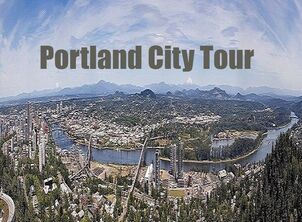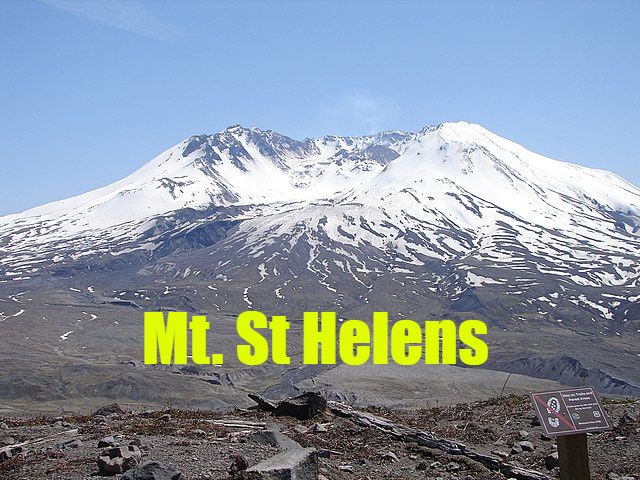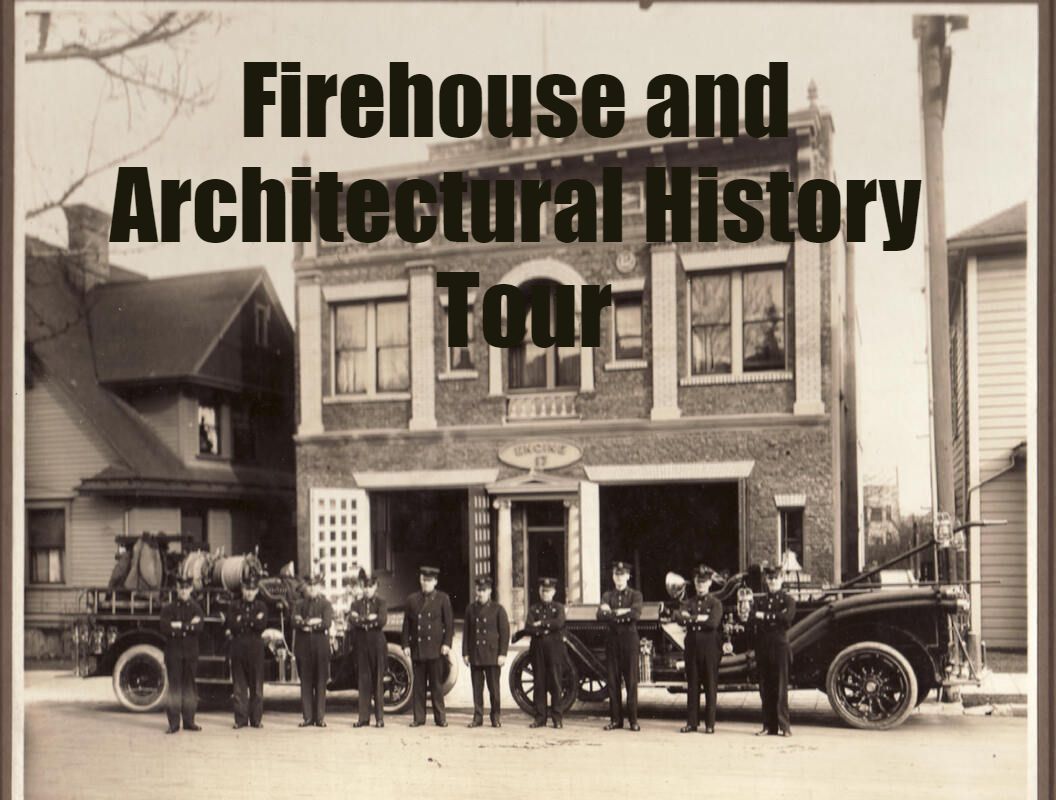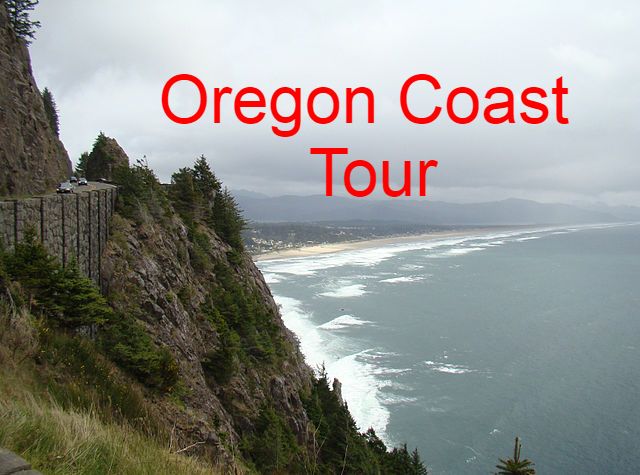Up ahead.
Is the Portland Building (1982) and famous Portlandia Statue.
The building is an example of post modern architecture.
Postmodern architecture is a style, or movement, which emerged in the 1960s as a reaction against the austerity, formality, and lack of variety of modern architecture. It thrived in the 80s and 90s. Postmodernism sought freedom from rules and from the idea of one “right” voice. Instead, employing a cut-and-paste approach and a mashup of eclectic styles, the buildings often appeared as collages of unexpected references and symbols. This move away from architecture as a universal object, favored local and individual expressions of place-making.
The Portland Building, is a landmark of post-modernism...
And it’s also known, as a demented, Kafkaesque, (surreal) boondoggle-
FOLLOW ALONG WITH PICTURES
See Picture, Portland Building.
It is the first major work, of postmodern architecture in the US.
It was the lead example in a 2009 Travel & Leisure magazine article titled, "World's Ugliest buildings".
It raised eyebrows in 1983 for its daring angles and its teal-rust & creamy, bony undead hand color scheme. It houses the administrative branch of city government.
The controversial building was designed by Princeton architect Michael Graves (who shares DNA with a Target toaster).
HAHAHA
What do the small windows, serve, you may ask?
When the commie, barbarian hordes attack, the military will use the windows, as archery slits, and lock this complex down, toute de suite. Because the show must go on.
Speaking of small windows; science has shown public employees need less light anyway.
And the thingies poking out of the sides: they’re a delightfully intriguing mystery.
Its leaking roof, and multi-million dollar repair, distracted bloggers for years.
On the Portland Building, is the Portlandia Statue, which we'll see in a few moments -
It is still the best place to, hide, the Portlandia statue, the second largest copper repousse statue in the United States, after the Statue of Liberty (which is about 4 times taller).
When we say hide, we do mean hide. To get a good view of her, you will have to exit the bus.
Please request it!
Named Portlandia, she is the Goddess of Commerce.
Portlandia was inspired by the design of the city seal. It depicts a woman in classical clothes with a trident reaching down with right hand to greet visitors to the building.
Built in the East, in September 1985 it floated down the Willamette River on a barge after being assembled locally.
Occasionally, there are suggestions to move the statue to a more visible location to Waterfront Park, but these have come to nothing, as the sculptor, Raymond Kaskey, states that he designed the statue for its location and would not approve of moving it.
It has also been claimed that Portlandia's low profile results from sculptor Kaskey's close guarding of his intellectual property. Unlike the Statue of Liberty, Portlandia may not be reproduced for uses such as on key chains or T-shirts, because the rights to the image of Portlandia remain the sole property of the sculptor.
We will circle around the building. But, let Phil know, if you would like to exit the bus, to view the Portlandia statue.
We still have time, so.
Next is, Sailing ships, the Willamette River, and Portland bridges. Specifically, the Hawthorne Bridge.
With many more.
Does anyone have any questions?
Is the Portland Building (1982) and famous Portlandia Statue.
The building is an example of post modern architecture.
Postmodern architecture is a style, or movement, which emerged in the 1960s as a reaction against the austerity, formality, and lack of variety of modern architecture. It thrived in the 80s and 90s. Postmodernism sought freedom from rules and from the idea of one “right” voice. Instead, employing a cut-and-paste approach and a mashup of eclectic styles, the buildings often appeared as collages of unexpected references and symbols. This move away from architecture as a universal object, favored local and individual expressions of place-making.
The Portland Building, is a landmark of post-modernism...
And it’s also known, as a demented, Kafkaesque, (surreal) boondoggle-
FOLLOW ALONG WITH PICTURES
See Picture, Portland Building.
It is the first major work, of postmodern architecture in the US.
It was the lead example in a 2009 Travel & Leisure magazine article titled, "World's Ugliest buildings".
It raised eyebrows in 1983 for its daring angles and its teal-rust & creamy, bony undead hand color scheme. It houses the administrative branch of city government.
The controversial building was designed by Princeton architect Michael Graves (who shares DNA with a Target toaster).
HAHAHA
What do the small windows, serve, you may ask?
When the commie, barbarian hordes attack, the military will use the windows, as archery slits, and lock this complex down, toute de suite. Because the show must go on.
Speaking of small windows; science has shown public employees need less light anyway.
And the thingies poking out of the sides: they’re a delightfully intriguing mystery.
Its leaking roof, and multi-million dollar repair, distracted bloggers for years.
On the Portland Building, is the Portlandia Statue, which we'll see in a few moments -
It is still the best place to, hide, the Portlandia statue, the second largest copper repousse statue in the United States, after the Statue of Liberty (which is about 4 times taller).
When we say hide, we do mean hide. To get a good view of her, you will have to exit the bus.
Please request it!
Named Portlandia, she is the Goddess of Commerce.
Portlandia was inspired by the design of the city seal. It depicts a woman in classical clothes with a trident reaching down with right hand to greet visitors to the building.
Built in the East, in September 1985 it floated down the Willamette River on a barge after being assembled locally.
Occasionally, there are suggestions to move the statue to a more visible location to Waterfront Park, but these have come to nothing, as the sculptor, Raymond Kaskey, states that he designed the statue for its location and would not approve of moving it.
It has also been claimed that Portlandia's low profile results from sculptor Kaskey's close guarding of his intellectual property. Unlike the Statue of Liberty, Portlandia may not be reproduced for uses such as on key chains or T-shirts, because the rights to the image of Portlandia remain the sole property of the sculptor.
We will circle around the building. But, let Phil know, if you would like to exit the bus, to view the Portlandia statue.
We still have time, so.
Next is, Sailing ships, the Willamette River, and Portland bridges. Specifically, the Hawthorne Bridge.
With many more.
Does anyone have any questions?




















